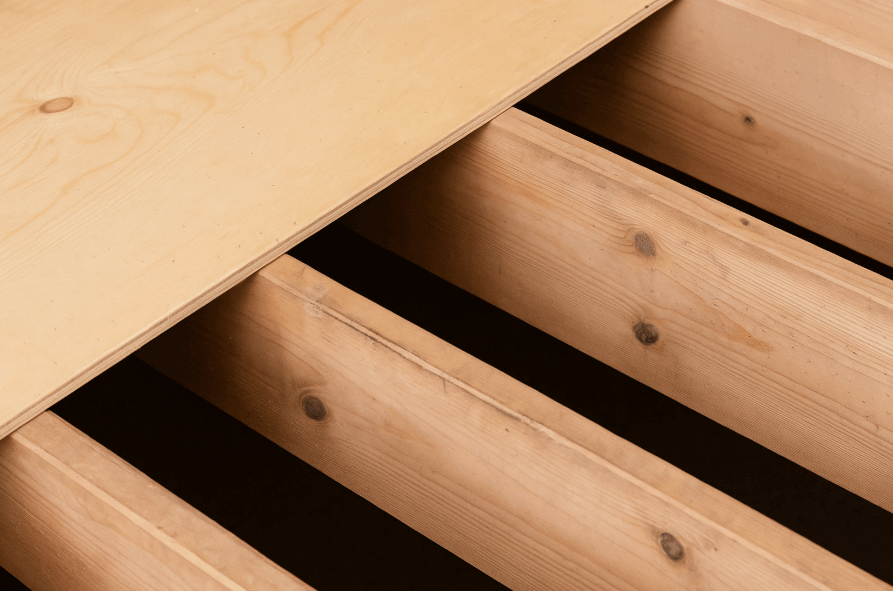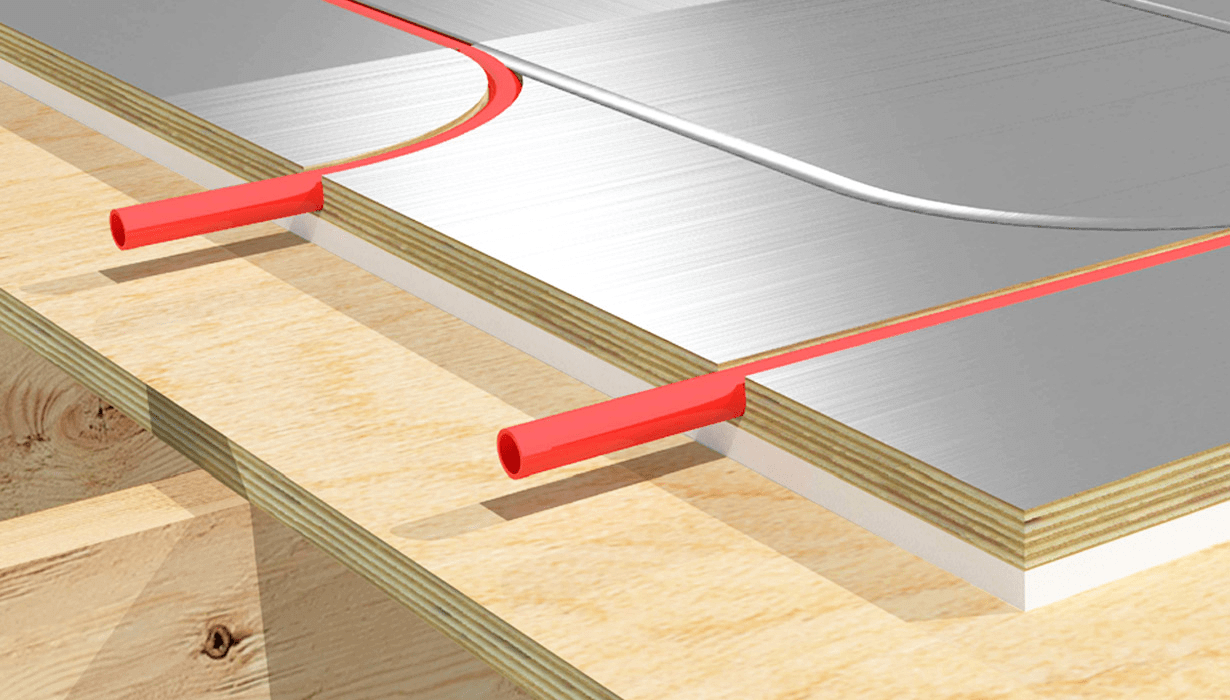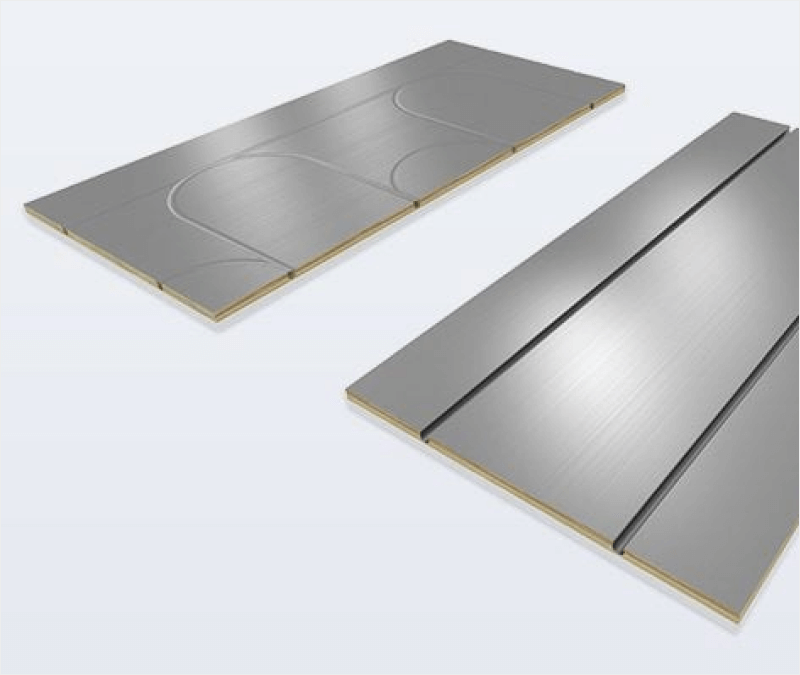Insulation Under Floorboards: The Key to Warmer Floors and Lower Energy Bills
Floorboard Insulation: Keep Floors Warm and Cut Energy Costs

When your home’s floors feel cold underfoot, even with the heat running, it’s a clear sign that heat is escaping through the floor structure. Insulation under floorboards is one of the most effective ways to stop this heat loss, improve comfort, and reduce energy costs. Whether you’re renovating an older property, finishing a basement, or upgrading an existing floor, the right underfloor insulation can make a dramatic difference in warmth and efficiency.
In this guide, we’ll cover why insulation under floorboards matters, the types of insulation available, and how WBI’s RadiantBoard EPS and ThermalBoard EPS radiant heating panels deliver both insulation and heat in one solution.
Why Floors Lose Heat Without Insulation
Floorboards—especially those over unheated spaces like basements, garages, or crawl spaces—can act as a direct pathway for heat to escape. This happens because:
- Conduction – Heat travels from the warm interior through the floor into colder areas below.
- Air Leakage – Gaps between boards and framing allow cold air to flow up and warm air to escape.
- Radiant Loss – Without a thermal barrier, heat radiates downward instead of staying in the living space.
The result? Cold feet, higher heating bills, and a less comfortable home overall.
Benefits of Insulating Under Floorboards
1. Warmer Floors Year-Round
Insulation acts as a thermal break, stopping heat from escaping downward and keeping floor surfaces warmer to the touch.
2. Lower Energy Costs
By reducing heat loss, your heating system doesn’t have to work as hard to maintain a comfortable temperature.
3. Improved Comfort
With radiant insulated floors, heat stays evenly distributed throughout the room instead of pooling near the ceiling as with forced air heating or being lost to the space below.
4. Moisture Control
The right insulation can help reduce condensation and moisture migration, which can damage wood floors over time.
Common Types of Underfloor Insulation
1. Rigid Foam Insulation
Rigid foam boards provide a continuous layer of insulation and are effective for both new builds and retrofits.
- Pros: High R-value per inch, moisture resistance, easy to cut and fit.
- Cons: Requires subfloor modifications if adding to an existing floor.
2. Fiberglass or Mineral Wool Batts
These are installed between joists to create a thermal barrier.
- Pros: Cost-effective, widely available.
- Cons: Can sag over time, leaving gaps; less moisture-resistant.
3. Spray Foam
Expands to fill gaps, providing both insulation and air sealing.
- Pros: Excellent air sealing, good for irregular spaces.
- Cons: Higher cost, requires professional installation.
4. Radiant Heating Panels with Built-In Insulation
A modern approach that combines insulation with a radiant heating system. WBI’s RadiantBoard EPS and ThermalBoard EPS are examples that deliver warmth and insulation in one step.
Insulation and Radiant Heat: The Perfect Pairing
Radiant floor heating is one of the most comfortable and energy-efficient heating methods available. But without insulation under the floorboards, much of that heat can escape downward instead of warming your living space.
EPS-backed radiant panels solve this by integrating a layer of expanded polystyrene insulation directly into the heating panel. This design:
- Stops heat from migrating down.
- Directs warmth into the room where it’s needed.
- Improves the system’s response time and efficiency.
Spotlight on WBI’s RadiantBoard EPS & ThermalBoard EPS

While many underfloor insulation methods work, combining insulation and heating into one product streamlines installation and maximizes performance.
RadiantBoard EPS
- Designed for installations over concrete or other non-insulated subfloors.
- Integrates EPS insulation to minimize downward heat loss.
- Ideal for remodels and retrofits where adding separate insulation is difficult.

ThermalBoard EPS
- Offers the same EPS insulation layer with a high-density MDF surface for added strength and durability.
- Perfect for high-traffic areas or projects requiring a smooth, solid surface for finished flooring.
- Designed for superior heat distribution while providing underfloor insulation.
Both products ensure your radiant heating system operates at peak efficiency and your floors stay warm, even over concrete slabs or cold subfloors.
Installation Considerations for Underfloor Insulation
When adding insulation under floorboards—whether as part of a radiant heating project or on its own—it’s important to:
- Seal Air Leaks First
- Use caulk or expanding foam to close gaps between joists, around plumbing, and near exterior walls.
- Choose the Right R-Value
- The colder your climate, the higher the R-value you’ll need for effective insulation.
- Ensure Moisture Protection
- Install vapor barriers where necessary to prevent condensation.
- Plan for Flooring Compatibility
- If installing radiant panels, confirm they’re compatible with your chosen floor covering (tile, hardwood, LVP, carpet, etc.).
- Follow Manufacturer Guidelines
- Especially for radiant heating panels, proper installation is critical for performance and warranty protection.
Underfloor Insulation for Different Scenarios
Over a Crawl Space
Insulating the floor above a crawl space can dramatically improve comfort. EPS panels like RadiantBoard EPS provide both insulation and radiant heat, making the space above warmer and more energy-efficient.
Over an Unheated Basement or Garage
ThermalBoard EPS is ideal for rooms above unheated basements or garages, where foot traffic and durability are considerations.
Over Concrete Slabs
EPS-backed panels excel here by adding insulation where it’s otherwise difficult to retrofit.
Long-Term Savings and Comfort
While adding insulation under floorboards involves an upfront cost, it pays for itself over time through:
- Lower energy bills
- Reduced wear on heating equipment
- A more comfortable living environment
Radiant heating systems with integrated insulation—like WBI’s EPS panel options—can offer even greater returns because they improve system efficiency while delivering luxurious, even warmth.
Final Thoughts
Insulation under floorboards is one of the most effective ways to improve comfort and energy efficiency in your home. It stops heat loss, keeps your floors warm, and lowers your heating costs. When combined with radiant heating, the benefits multiply.
If you’re upgrading or installing a radiant floor heating system, choosing a solution that includes both heat and insulation like RadiantBoard EPS or ThermalBoard EPS—is the smart, long-term choice. You’ll get warmer floors, faster response times, and better overall energy performance.